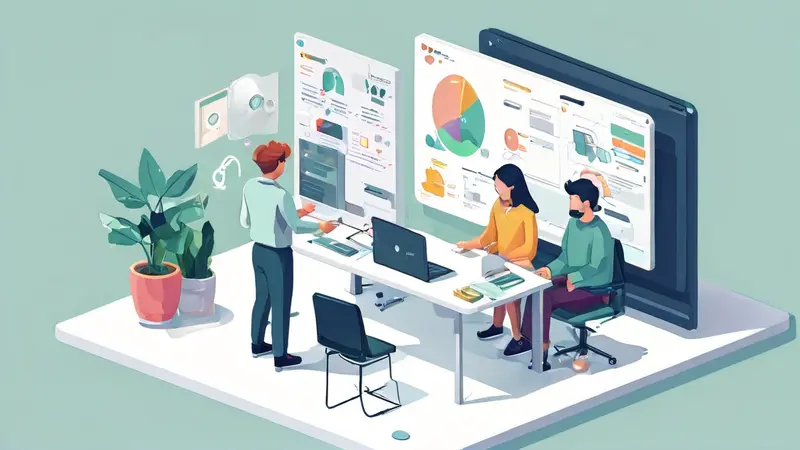
CNC programming is the term used for programming of a Computer Numerical Control (CNC) machine, a manufacturing process in which pre-programmed computer software dictates the movement of factory tools and machinery. The process is extensively applied in a variety of industries, including automotive, aerospace, and electronics, to produce complex parts with high precision and repeatability. One of the key attributes of CNC programming is the code generated to direct the machines. This code, often written in a language called G-code, is the set of instructions that the CNC machine follows to produce a part.
I. INTRODUCTION TO CNC PROGRAMMING
COMPUTER NUMERICAL CONTROL (CNC) programming is a critical aspect of the manufacturing industry. This specialized type of coding involves the translation of a design produced by Computer Aided Manufacturing (CAM) software into numbers and letters. These characters form the instructions that guide CNC machines to perform precise movements to manufacture various components. The prowess of CNC programming is evident in its capability to facilitate the creation of intricate details on workpieces with extreme accuracy. Learning to program a CNC machine requires a comprehension of the machinery's capacities, an understanding of machining principles, and a firm grasp of the programming language predominantly used in the industry.
II. BASICS OF G-CODE
G-CODES serve as the foundation for CNC programming. This alphanumeric language instructs the machine on how to move tools in a controlled manner. G-codes manage paths, speeds, and feed rates for the CNC machine to execute predictable and precise actions. This involves linear movements, drilling, tool changes, and setting different modes of machine operation like rapid movement or controlled feed. Mastering G-code is an indispensable facet of being a proficient CNC programmer and manufacturer.
III. ROLE OF MACHINING SOFTWARE
To effectively manage and generate G-code, programmers utilize specialized MACHINING SOFTWARE. Renowned software tools include Autodesk's Fusion 360, Mastercam, and SolidWorks CAM, which provide a user-friendly interface and powerful capabilities for creating complex designs and converting them into machine-readable instructions. They support simulations that aid in visualizing the end-product before actual machining takes place, helping to minimize errors and scrap material. This software is a linchpin in the CNC programming realm, and continuous updates ensure compatibility with evolving machine technology.
IV. CNC MACHINE SETUP
The transition from a digital design to a tangible part is not solely dependent on G-code; appropriate CNC MACHINE SETUP is equally crucial. This process involves preparing the workpiece, securing it to the machine bed, selecting the correct tools, aligning the machine axes, and setting the zero point or origin of the workpiece geometry. Meticulous setup ensures the output matches the programmed dimensions and tolerances. CNC programmers often work alongside machinists to confirm that the physical setup complies with the programmed instructions, ensuring efficient and error-free production.
V. PROGRAMMING COMPLEXITY IN CNC
As manufacturable designs vary widely, so does the COMPLEXITY IN CNC PROGRAMMING. Simple components may require straightforward programming, where conventional CNC machines with 3-axis capabilities suffice. However, advanced applications, such as 5-axis machining, call for intricate programming strategies to navigate the additional rotational axes, allowing for the creation of highly complex geometries with tight tolerances. Higher complexity often translates to advanced planning, increased testing with simulations, and sometimes trial-and-error adjustments to perfect the CNC program.
VI. OPTIMIZATION AND TROUBLESHOOTING
An important skill in the arsenal of a CNC programmer is OPTIMIZATION AND TROUBLESHOOTING. After initial programming and setup, optimizing the process for speed and tool lifespan can lead to substantial efficiency gains. Additionally, the ability to troubleshoot issues, from inaccuracies in the part dimensions to unexpected machine behaviors, is essential for maintaining productivity. Employing diagnostic tactics and adjusting G-code or machine parameters accordingly is part of the ongoing process to achieve optimal performance in a CNC environment.
VII. TRAINING AND CONTINUOUS LEARNING
The realm of CNC programming is dynamic, with advancements in software and machining technologies necessitating ONGOING TRAINING AND LEARNING. Aspiring and current CNC programmers should engage in continuous education to stay abreast of the latest strategies, trends, and regulatory standards that influence manufacturing practices. Vocational courses, certification programs, and hands-on experience are integral to honing one's skills and sustaining expertise in the field.
VIII. FINAL CONSIDERATIONS
In conclusion, CNC programming is fundamental to modern manufacturing operations, enabling the production of highly precise and intricate parts. It encompasses an understanding of G-code, leveraging advanced machining software, precise machine setup, addressing complex programming requirements, optimization, troubleshooting, and a commitment to lifelong learning. The result is an efficient, innovative, and high-caliber manufacturing process that meets the stringent demands of various industries. As technology continues to evolve, so too will the methods and best practices associated with CNC programming, securing its role as a cornerstone of precision manufacturing.
相关问答FAQs:
What is the English name for CNC machining programming?
The English name for 加工中心编程 (jiā gōng zhōng biān chéng) is CNC machining programming. CNC stands for Computer Numerical Control, which refers to the use of computers to control machine tools. Machining programming involves creating a set of instructions that the machine follows to perform specific tasks, such as cutting or shaping materials. These instructions are typically written in a programming language specifically designed for CNC machines. CNC machining programming plays a crucial role in automating and optimizing the operation of machining centers, enhancing efficiency, accuracy, and productivity in various industries.
文章标题:加工中心编程英文叫什么,发布者:worktile,转载请注明出处:https://worktile.com/kb/p/2138953

 微信扫一扫
微信扫一扫  支付宝扫一扫
支付宝扫一扫 




